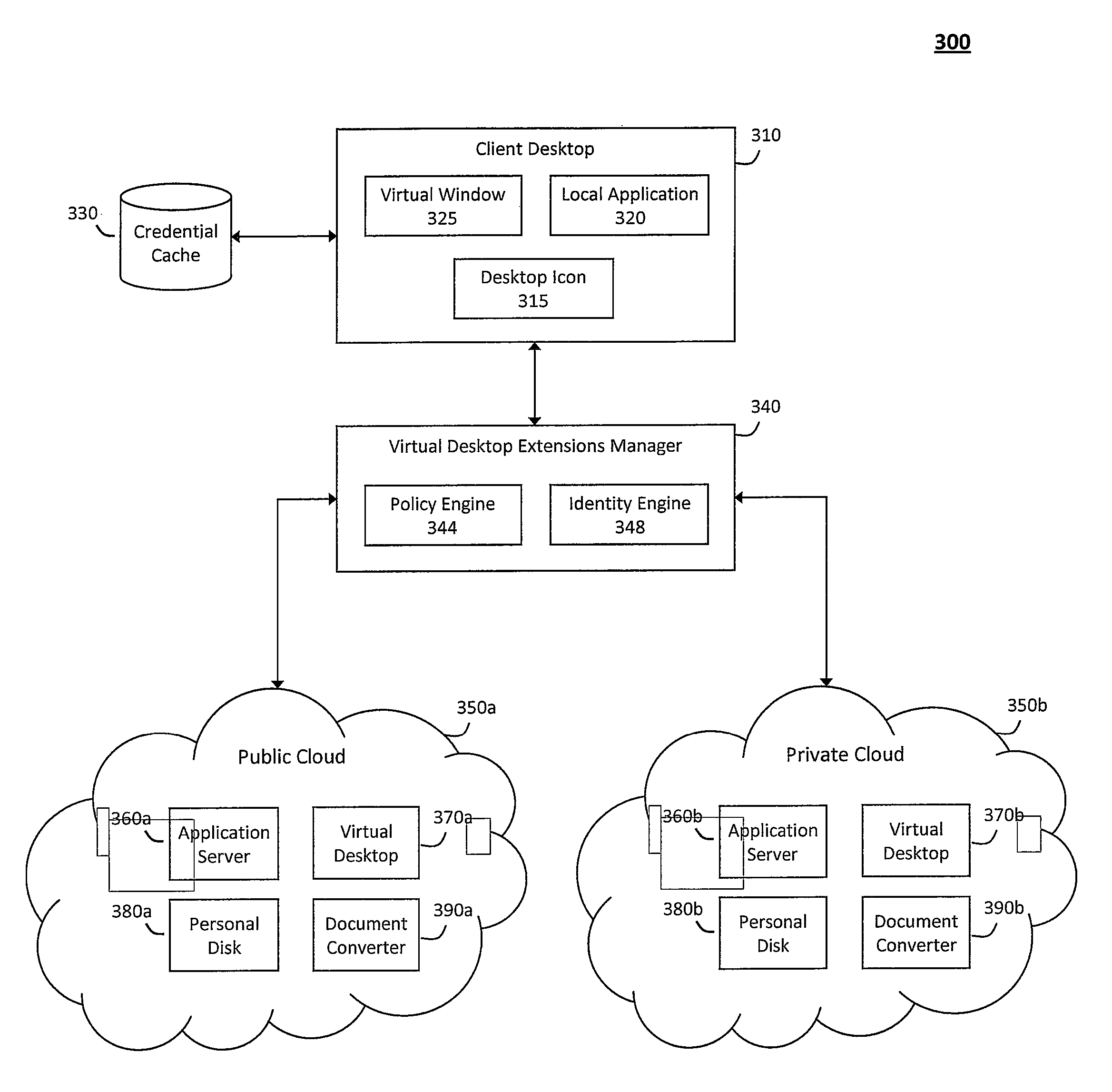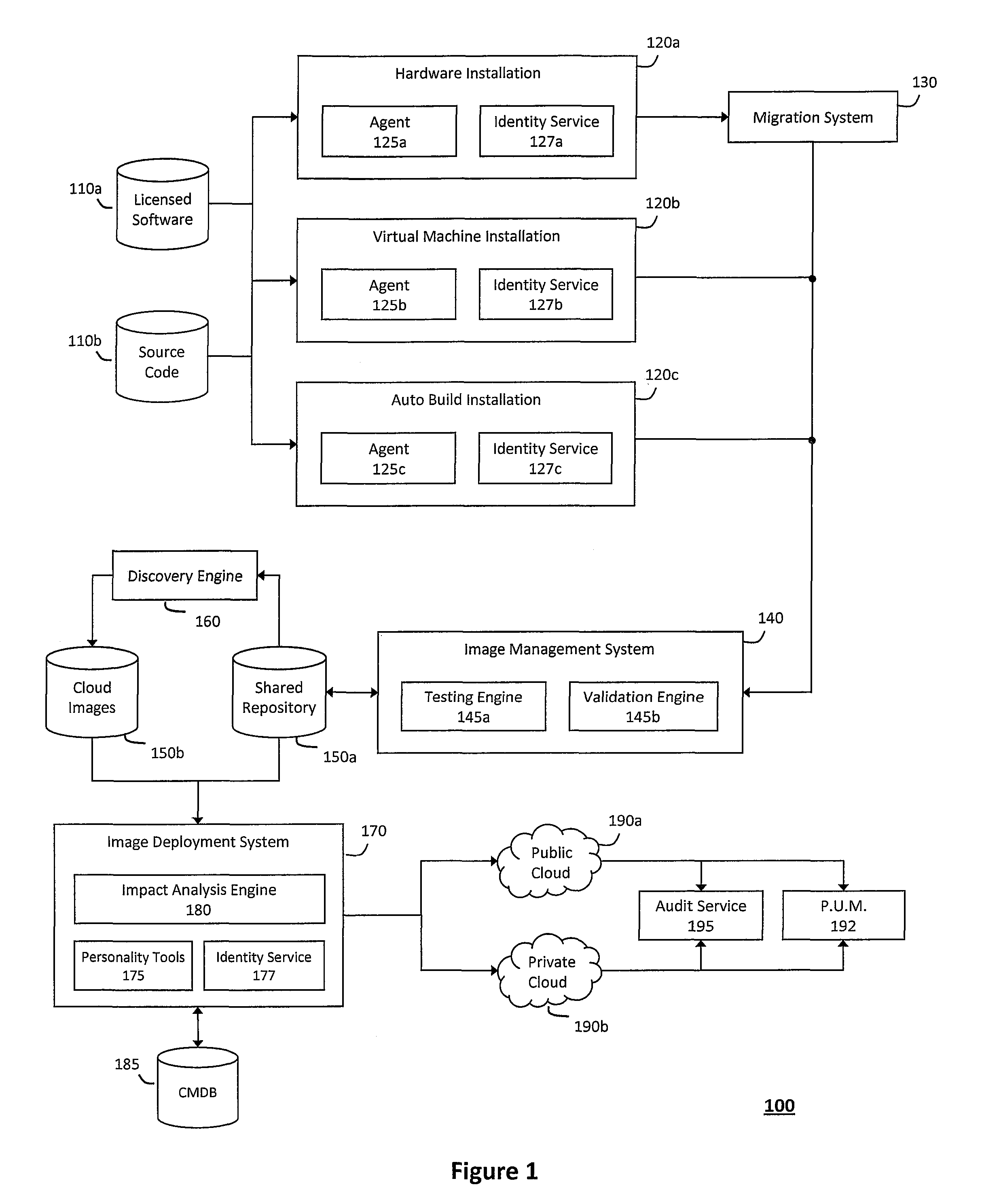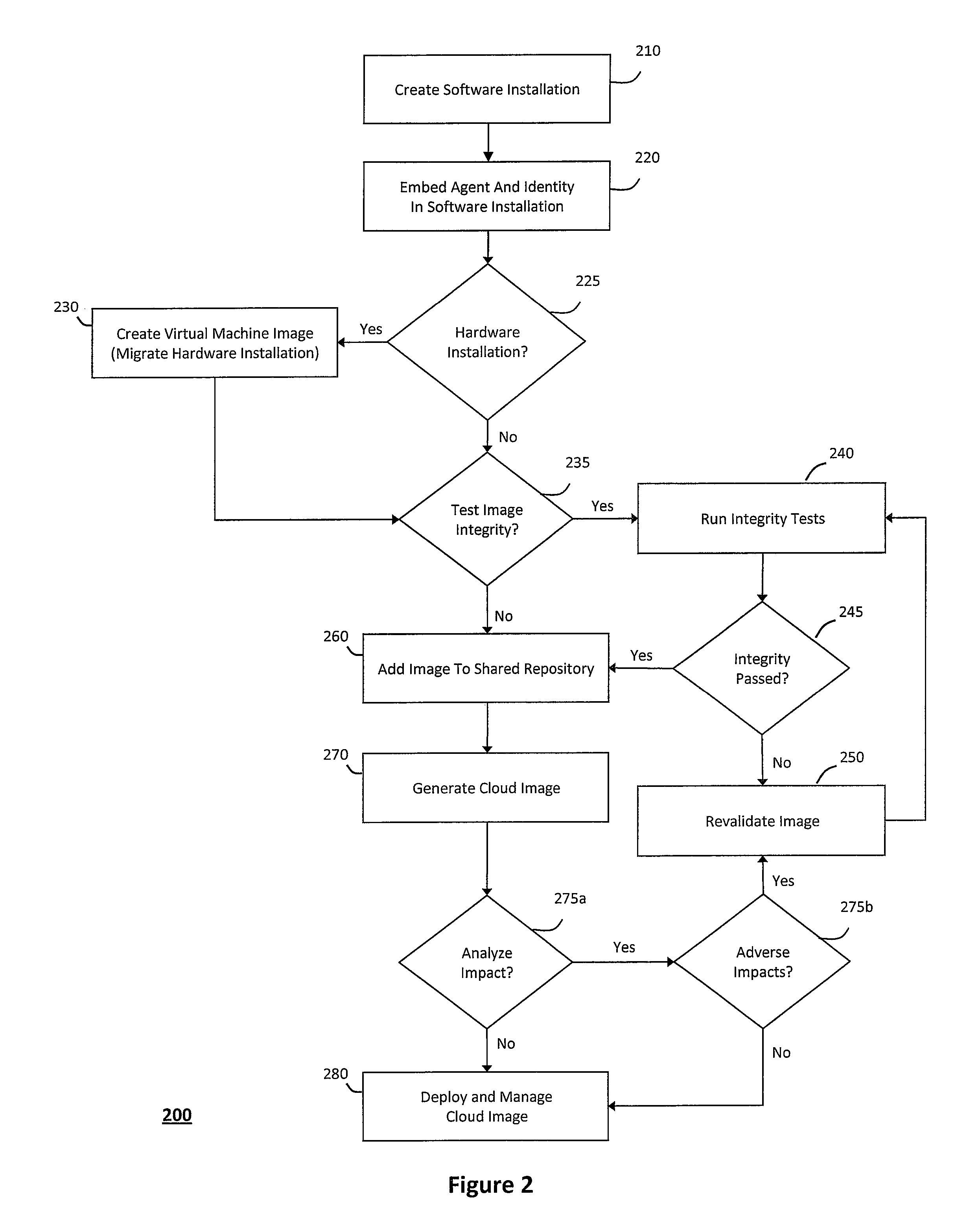System and method for providing virtual desktop extensions on a client desktop
a virtual desktop and client desktop technology, applied in multi-programming arrangements, data switching networks, instruments, etc., can solve problems such as affecting productivity, individuals and organizations typically lack the ability to change many aspects of the platform, and existing systems tend to fall short in adequately addressing concerns relating to managing or controlling workloads and storage in such environments. , to achieve the effect of simplifying complexity
- Summary
- Abstract
- Description
- Claims
- Application Information
AI Technical Summary
Benefits of technology
Problems solved by technology
Method used
Image
Examples
Embodiment Construction
[0029]According to one aspect of the invention, FIG. 1 illustrates a block diagram of an exemplary system 100 for controlling cloud and virtualized data centers in the system for providing virtual desktop extensions on a client desktop. In particular, as noted above, cloud and virtualized data centers generally include various dynamically allocated resources that can have unpredictable characteristics. Thus, the system 100 shown in FIG. 1 and described herein may coordinate such dynamically allocated resources in a closed-loop management infrastructure that can manage declarative policies, fine-grained access controls, and orchestrated management and monitoring tools. In one implementation, the system 100 may operate in a workload management system that provides various mechanisms for automatically creating images that can be deployed to a public cloud (or cloud data center) 190a external to an information technology infrastructure, and which can further be deployed to a private clo...
PUM
 Login to View More
Login to View More Abstract
Description
Claims
Application Information
 Login to View More
Login to View More - R&D
- Intellectual Property
- Life Sciences
- Materials
- Tech Scout
- Unparalleled Data Quality
- Higher Quality Content
- 60% Fewer Hallucinations
Browse by: Latest US Patents, China's latest patents, Technical Efficacy Thesaurus, Application Domain, Technology Topic, Popular Technical Reports.
© 2025 PatSnap. All rights reserved.Legal|Privacy policy|Modern Slavery Act Transparency Statement|Sitemap|About US| Contact US: help@patsnap.com



